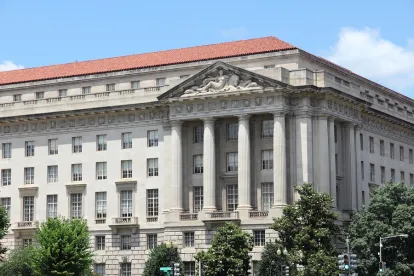Inventory Reset reporting under the Toxic Substances Control Act (TSCA) seems like years ago, because it was – Form A’s were due February 7, 2018 for manufacturers and October 5, 2018 for processors. Companies are now likely focused on meeting the November 30, 2020 deadline for reporting under the Chemical Data Reporting rule (CDR).
However, companies that claimed chemical identities confidential on Form A’s may still have substantiation requirements, regardless of whether they submitted substantiations at the time or not. This is because EPA allowed companies to substantiate their claims “later” – and “later” is now in just two weeks. EPA also changed the rules for substantiating CBI claims in connection with Form A’s earlier this year. Those confidential business information (CBI) claims may be in jeopardy unless companies act by November 1, 2020.
EPA has some guidance on its website about this requirement, but this alert provides more information.
Inventory Reset Remembered
In the Frank R. Lautenberg Chemical Safety for the 21st Century Act (enacted in 2016), Congress amended TSCA to require EPA to designate chemical substances on the TSCA Inventory as either “active” or “inactive,” based on mandatory reporting by manufacturers and optional reporting by processors. This requirement, TSCA § 8(b)(4), was generally known at “Inventory Reset.” Reporting companies could request that substances already on the confidential portion of the TSCA Inventory be kept confidential. As amended, § 14(c)(3) requires substantiation of CBI claims in accordance with EPA rules.
Under TSCA § 8(b)(4)(D)(i), companies submitting requests for continued CBI treatment of chemical identities on the confidential portion of the Inventory had three options for substantiating those claims. First, they could defer substantiation until required to do so by a rule that EPA was directed to adopt. Second, they could substantiate their CBI claims at the time they submitted their Form A’s. Third, they could rely on substantiations they had submitted within the previous five years.
In 2017, EPA adopted a rule, entitled TSCA Inventory Notification (Active-Inactive) Requirements, 40 C.F.R. Part 710, Subpart B. EPA offered those three options for substantiating CBI claims for confidential chemical identities. Under any of these options, substantiations had to answer the questions in 40 C.F.R. § 710.35(c).
Companies That Deferred Substantiating Their Chemical Identity CBI Claims
TSCA § 8(b)(4)(C) and (D) required EPA to adopt a rule for reviewing CBI claims for chemical identities submitted under Inventory Reset. EPA published the CBI Review Rule in March 2020 as 40 C.F.R. Part 710, Subpart C. It established November 1, 2020, as the due date for all substantiations. 40 C.F.R. § 710.47(a).
Thus, a company that made a chemical identity CBI claim on a Form A, but deferred substantiation until later, must submit its substantiation for that claim by November 1. In doing so, it must answer all the questions in 40 C.F.R. § 710.45(b).
Companies That Substantiated Their CBI Claims for Chemical Identities During Inventory Reset
Companies that substantiated their CBI claims at the time that they submitted their Form A’s may nevertheless still have to complete the substantiation of their claims by November 1. This is because EPA recently added to the requirements for substantiations, and those additions are applicable even to the past substantiations.
One of the statutory requirements for substantiating CBI claims, TSCA § 14(c)(1)(B)(iv), is that the submitter has “a reasonable basis to believe that the information is not readily discoverable through reverse engineering.” The 2017 EPA rule’s substantiation questions did not address reverse engineering. Instead, submitters were required to certify that, “I have a reasonable basis to believe that the information is not readily discoverable through reverse engineering.”
An NGO challenged this omission of substantiation questions on reverse engineering, as well as other aspects of the rule. In EDF v. EPA, 923 F.3d 446 (D.C. Cir. 2018), a court found that the rule was arbitrary and capricious for failing to require substantiation of the reverse engineering criterion, although it rejected all the other NGO arguments.
As a result of this court decision, EPA included the following questions on reverse engineering in the March 2020 CBI Review Rule, 40 C.F.R. § 710.45(b):
(6) Does this particular chemical substance leave the site of manufacture (including import) or processing in any form, e.g., as a product, effluent, or emission? If yes, please explain what measures have been taken, if any, to guard against the discovery of its identity.
(7) If the chemical substance leaves the site in a form that is available to the public or your competitors, can the chemical identity be readily discovered by analysis of the substance (e.g., product, effluent, or emission), in light of existing technologies and any costs, difficulties, or limitations associated with such technologies? Please explain why or why not.
The CBI Review Rule also added those questions to the substantiation questions in Subpart B. 40 C.F.R. § 710.37(c)(2)(ii) and (iii). The Inventory Reset regulations required answers to all the questions in § 710.37(c):
Answers that do not include the answers to all applicable questions in paragraph (c) of this section will not be deemed to be substantiations made under the TSCA section (8)(b)(4)(D)(i) requirement.
40 C.F.R. § 710.37(a)(1). Thus, even though the two added questions were not included at the time of Form A submissions, submitters must address them now if they have not already done so.
The CBI Review Rule also cautions that submitters with previous substantiations must answer these two questions:
Any person who completed the voluntary substantiation process set forth in § 710.37(a)(1) is exempt from the substantiation requirement of this subpart pertaining to the submission of answers to the questions in § 710.45(b)(1) through (6). All remaining requirements of § 710.45 must be met in accordance with the deadline specified in § 710.47(a), including the requirement to submit answers to the questions in § 710.45(b)(7) and (8), signed and dated by an authorized official, and to complete the certification statement in § 710.37(e).
40 C.F.R. § 710.43(b)(1).
Accordingly, persons who submitted substantiations for Inventory Reset along with their Form A’s may need to supplement those substantiations by answering these two questions. Those supplemental substantiations are due by November 1, 2020. 40 C.F.R. § 710.47(a).
Companies That Relied on Pre-Inventory Reset Substantiations
Previous substantiations within the past five years that did answer the two questions need not do so again. 40 C.F.R. § 710.43(b)(2). Similar questions have long been part of the PMN and CDR regulations on substantiating chemical identity CBI claims. 40 C.F.R. §§ 720.85(b)(3)(iv)(H), (I), 711.30(c)(2), (3). Thus, it is possible that previous substantiations did include answers to those questions. Inventory Reset submitters that relied on previous substantiations should check to see if those questions were answered. If not, they must supplement their previous substantiations by responding to those questions. The supplements are due by November 1, 2020.
Even a submitter that had substantiated the CBI claim within the past five years by including those two questions must supplement its submission by identifying the previous submission to EPA. 40 C.F.R. § 710.43(b)(2)(ii). This supplemental submission is also due by November 1, 2020. 40 C.F.R. § 710.47(b).
What Happens If the Two Questions Are Not Answered by November 1?
Under the CBI Review Rule, for any of the three substantiation options, “EPA will deny the confidentiality claim in accordance with the procedures set forth in TSCA section 14(g)(2) and 40 CFR part 2, subpart B” unless a substantiation meeting all the requirements is submitted. 40 C.F.R. § 710.49.
What Happens After November 1, 2020?
Until EPA completes its review of a CBI claim for a chemical substance identity on the confidential portion of the Inventory, that identity will remain confidential. The preamble to the Inventory Reset rule explained,
A chemical substance for which EPA has received a request to maintain an existing CBI claim for specific chemical identity will remain on the confidential portion of the Inventory pending EPA’s review of the claim pursuant to a review plan to be promulgated at a later date in accordance with TSCA section 8(b)(4)(C)-(D).
Under TSCA § 8(b)(4)(E)(i), EPA must complete its review of all the CBI claims for chemical identities submitted in connection with Inventory Reset within five years of compiling the initial list of active substances. According to its website, EPA published the Inventory identifying active substances reported by both manufacturers and processors on February 19, 2019, so it must complete the reviews by February 19, 2024.
Under the CBI Review Rule, approved CBI claims will generally last for ten years:
[With certain exceptions,] a specific chemical identity that is the subject of an approved confidentiality claim under this subpart will be protected from disclosure for a period of 10 years from the date on which the confidentiality claim was first asserted by any submitter after June 22, 2016, unless, prior to the expiration of the period, the claimant notifies EPA that the person is withdrawing the confidentiality claim, in which case EPA will not protect the information from disclosure; or EPA otherwise becomes aware that the information does not qualify for protection from disclosure, in which case EPA will take the actions described in TSCA section 14(g)(2) to notify the claimant of EPA’s intent to disclose the information.
40 C.F.R. § 710.55(b). Submitters will have the opportunity to renew their CBI claims prior to the expiration of the ten-year period. TSCA § 14(e)(1)(B)(2).
For unapproved CBI claims, EPA may make the chemical identity public. Under TSCA § 8(b)(4)(B)(iv), EPA must move any active chemical substance for which no request was received to maintain an existing claim for protection against disclosure of the specific chemical identity of the chemical substance as confidential from the confidential portion of the Inventory to the public portion of the Inventory. EPA presumably will interpret this to mean that no CBI claim for which all the substantiation questions were satisfactorily answered was received.
What is less clear is what happens if two companies submit CBI claims for the same confidential chemical identity but one of the claims is denied. In that case, it would not be the case that “no” request to maintain confidentiality was received. On the other hand, under CDR confidentiality rules, if a single company fails to claim and substantiate a chemical identity on the confidential portion of the Inventory, EPA will make that chemical identity public “without further notice to the submitter.” 40 C.F.R. § 711.30(e).
Conclusion
In summary, it’s time to go back to 2018 and check on what was – and was not – submitted by way of substantiating CBI claims for confidential chemical identities during Inventory Reset, and then taking appropriate action if necessary. This needs to be completed by November 1. After taking care of this issue, companies may have just enough time to meet the November 30 CDR submission deadline.






 />i
/>i
